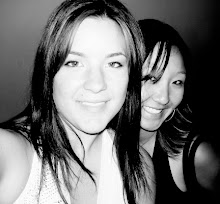I have had a very long and productive day but the last post didn't leave my thoughts for a moment. I am thinking, instead of trying to define something within the gradation, exploring how the spaces develop along the gradation. I imagine that has something to do with where camp will go. . . now that I think about it. . . maybe. . . but in my case looking at spaces that are created for semi-permanence, with a thoughtful mind, with the intensions of creating a space in which they can really inhabit, with out any sort of training/education on that matter. . three levels might make a decent illustration for the timeframe I am looking at. One being fairly temporary, one pretty decently in the middle, and one with the intension of being more permanent than temporary. . I realize it will be difficult to define each of these and which structures/spaces belong in each because it is subjective to an extent [what isn't I guess]. But truly this has to do with my interpretation of the builders intention. Hopefully I can find spaces, like the spheres I mentioned before, where I can talk to the people who envisioned and built the structure, I can talk to them about how they experienced it and how it developed through time. I think that will be vital. In addition I can talk about each category in a broad sense and then have one case study in which I investigate deeply. Having only one case study per group might not seem sufficient. . just because you do not know what is unique to that person/structure/time/place and what is true for that moment in the gradation. There are so many variables and to be honest about it you only want to change one variable so maybe these case studies need to be restricted to location? time they were built? reasons for building? All of these? Are there too many variables to control it? And even if there are should I control as many as I can? [I am completely typing out loud at this point, if you couldn't already tell.]
So, for instance, the product might be organized as such:
1)Introduction/Intention/Questions I had/Explanation of Organization or Evolution
1.5) What is before stage one? If applicable. . .
2)Stage One: __________________
a)What I asked- general
b)What I found- general
c)Case Study [asked]
d)Case Study [found]
e)Conclusions
3)What is in between Stage One and Stage Two
4)Stage Two: ___________________
a)What I asked- general
b)What I found- general
c)Case Study [asked]
d)Case Study [found]
e)Conclusions
5) What is between Stage Two and Stage Three
6) Stage Three: _________________
a)What I asked- general
b)What I found- general
c)Case Study [asked]
d)Case Study [found]
e)Conclusions
7) What would come after Stage Three, if applicable. . .
8) Conclusions between them, after thoughts, further questions, ect.
But what would the stages be? I think, obviously with very little behind this.. with more research I am sure my thoughts will change, but I think that either keeping with the tent cities OR the structures created at Burning Man would be an interesting thing to look at for stage one. Stage two could be something like the spheres that are created with more sophistication and intended for a longer time span that tent cities/ burning man but are not as sophisticated or as permanent as what follows.. and then what would stage three be? Maybe some of the structures in Taos? I know that it is filled with people building their own structures to coincide with the environment and live independently from the 'status quo'. . but these would be structures that are in effect with building codes and have some professional influence. Maybe that is ok? Maybe not. I am going to have to keep reading/researching/thinking and see where all of this goes. . Lots of questions. More clarity. I hope!
-Cheers


Figure out what the "stages" are... quickly. The format will be a good jumping off point, but decide what the primary subject of study is to be. And, be careful not to make it too big.
ReplyDeleteThe limitations you were asking aabout in the body of your text will be determined by the subject of study that you choose. For instance, if you want to look at enviornmental performance having studies in different climates all over could be interesting f not necessary. However, studying different spatial configurations of ad-hoc structures (and the implications of those different configurations on some aspect of culture: lifestyle, family unit, community interaction etc.)may only be beneficial if studied within a single community.